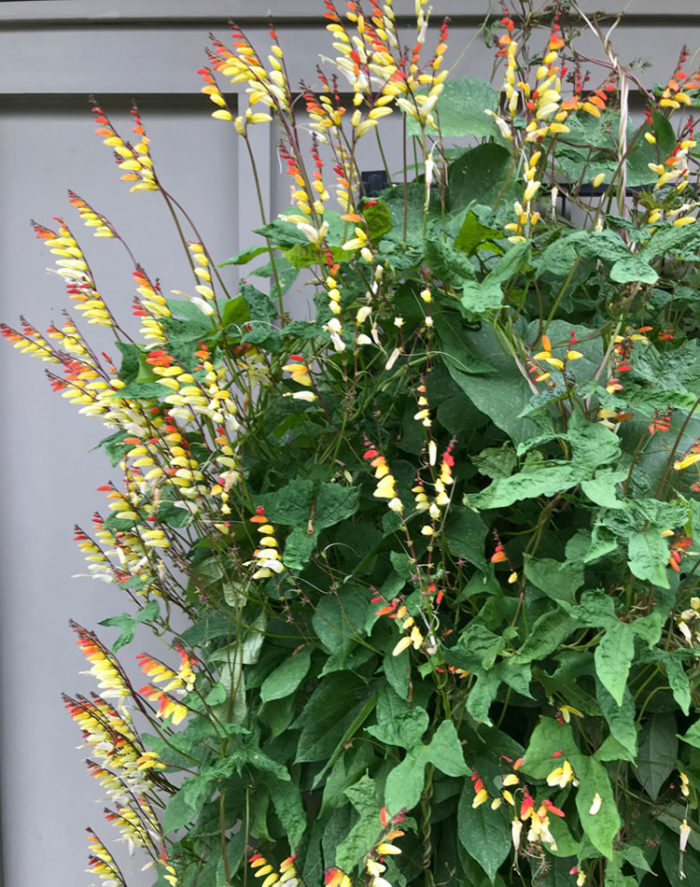
Certain vining plants, or those that can be trained similarly, provide many functions in the garden. Vines may perform the role of a spiller in a mixed arrangement. Their flexible stems arch and trail to soften the edges of a container and contrast with more upward or mounding growers. Other vines can act as a thriller if allowed to clamber over other plants or affix themselves to added elements such as trellises. We rely on tender plants to provide additional interest during the warmer months, and gardeners look for forms and growth habits that help achieve the desired effects of their designs. They may enhance the scene with beautiful flowers, distinctive foliage, or interesting fruits. Certain tender vines can provide all three. Here are my favorite tender vines for your garden this summer.
 |
 |
| Hyacinth bean provides multiple levels of interest with its abundance of small flowers and its shiny magenta seedpods. Photos: Jim Kincannon |
Hyacinth bean (Lablab purpureus, Zones 10–11) is a tropical vine grown as an annual in our region. Easily started from seed indoors or out, it is a vigorous, large-growing plant requiring sizable, sturdy support. In shades of pink to purple, the delightful flowers begin developing midseason and take the typical form found in the pea family. The three-part leaves are dark green with hints of purple and are an ideal backdrop for both the flowers and the fruit. Seeds are encased in brilliant magenta-colored pods that many consider the most ornamental feature of the plant.
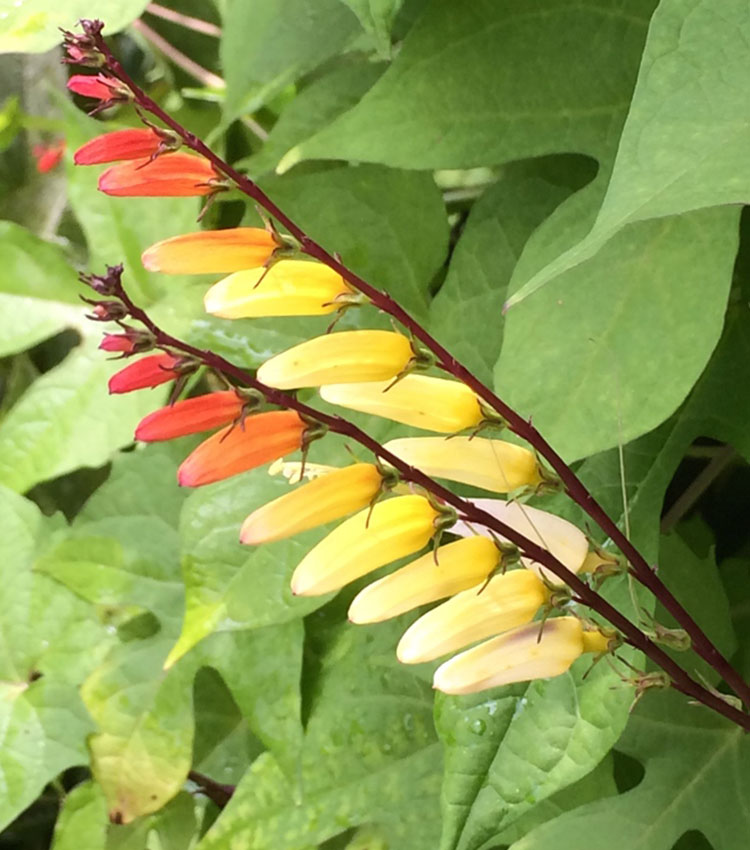
Spanish flag (Ipomoea lobata, Zones 8–11) is closely related to morning glory (Ipomoea purpurea, annual), with similar curves to the leaves but with distinctly different flowers. Growing in racemes, blossoms emerge orange-red before mellowing to yellow and finally reaching a creamy white as they age. The range of hues is present all at once, and each flower in the individual clusters points in the same direction. The effect is evocative of flags in the wind, and the spectrum of colors do indeed suggest Spain’s national banner. Indoor germination in early spring may be desired due to the length of time it takes this plant to begin growing and achieve flowering, and seeds require either scarification by nicking the seed coat or soaking in water.

Citrus-yellow passionflower (Passiflora × ‘Citrina’, Zones 9–11), attractive even in bud form, has lovely starlike flowers and handsome foliage. The flowers are smaller but no less showy than some closely related passionflowers, shining in tones of lemon yellow. The slightly lobed leaves have a unique and classic shape somewhat reminiscent of a bell and are rarely troubled by pests and diseases, adding to its allure. Reputed to bloom well in a sunny window, it can brighten up the indoors year-round in addition to captivating in the summer landscape. Encourage it to climb a trellis or other frame.
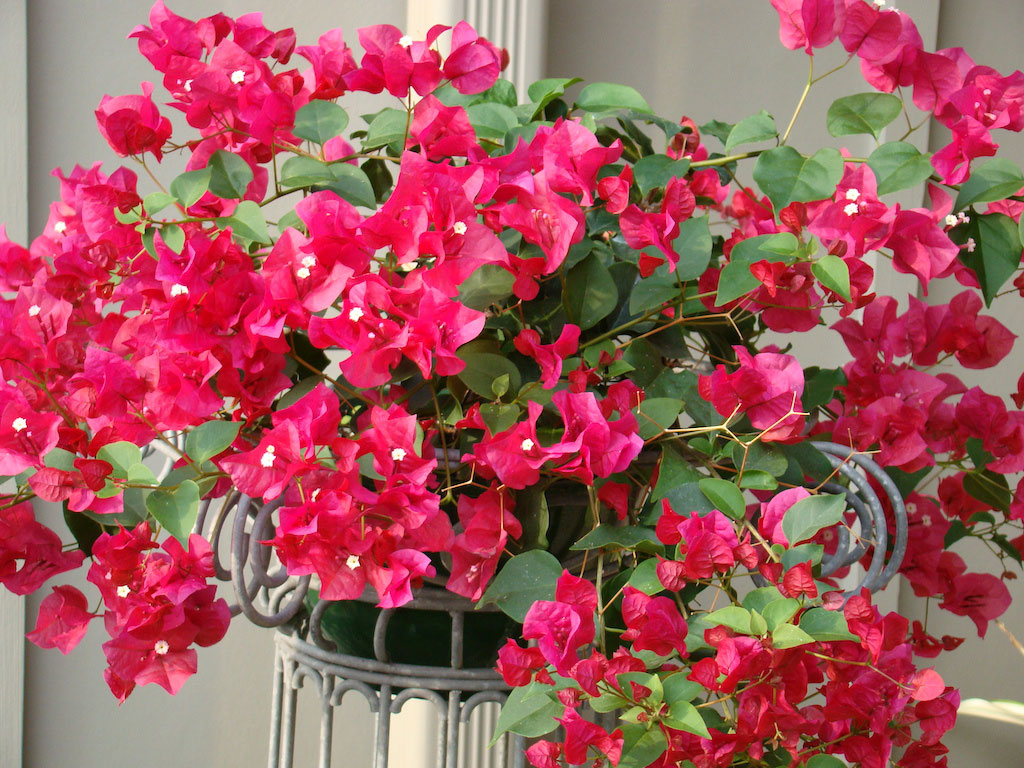
Bougainvillea (Bougainvillea spp. and cvs., Zones 9–11), also known as paper flower, puts on a color-filled spectacle with vibrant bracts that surround the comparatively insignificant flowers. Widely planted in milder climates, it can be an eye-catcher as a warm-weather specimen in the Midwest. Popular varieties display shades from white to red, salmon, pink, yellow, purple, or magenta, sometimes with variegated foliage. Intolerant of our cold-season temperatures, it can be tricky to overwinter. It wants to sprawl, and available indoor space can be a limiting factor. Even given optimal conditions, it can be difficult to maintain its size and have it bloom well in the home, and simply keeping it alive over winter may be sufficient for some. Watch out for the thorns along the stems when handling or pruning the plant, and grow it in a container with sharp-draining media.
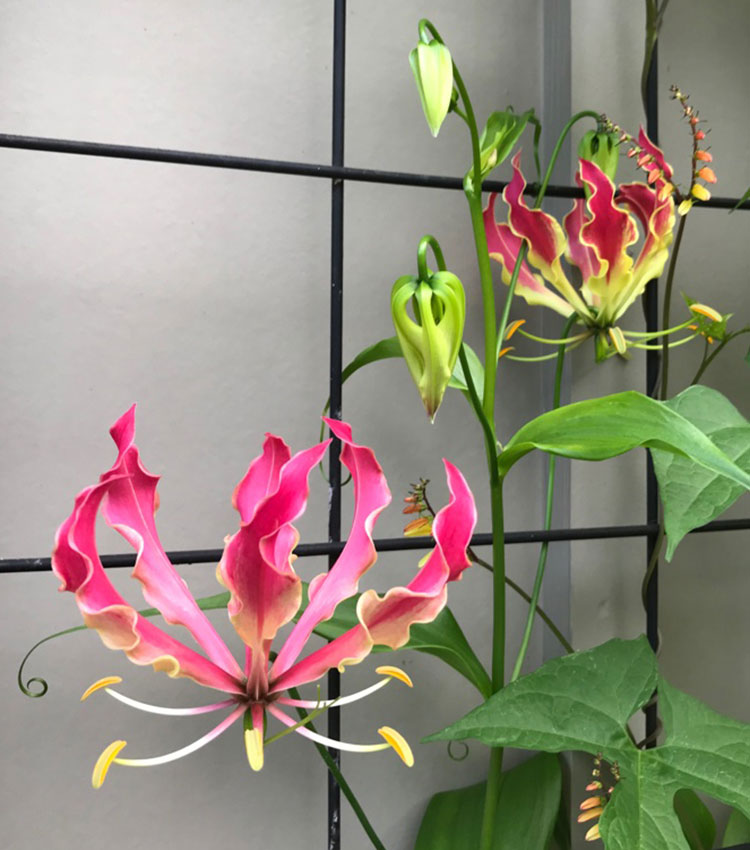
Flame lily (Gloriosa superba, Zones 9–11) earns its name from the gorgeous colors and shapes of its flower, particularly on those cultivars with reflexed, or backward-curving, tepals. It can be weedy in some warmer parts of the world, which should not be an issue in our region. Care should be taken when handling the above- and below-ground structures because they are easily damaged, and all parts are poisonous to humans and animals in higher doses. Keeping them potted and moving them into larger containers or the ground for the growing season allows them to be more easily relocated when temperatures dictate. Rather than twining around available supports, they employ the unusual mechanism of latching on with tendrils produced at the leaf tips. High heat may inhibit their performance, so moderate daytime temperatures and cool nights are preferable.
—Jim Kincannon is a graduate of the School of Professional Horticulture at The New York Botanical Garden where he also earned a certificate in landscape design. He is a Master Gardener and was a horticulturist at Newfields in Indianapolis where he now volunteers.




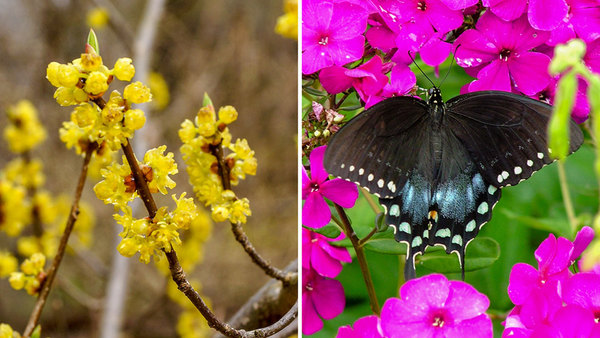












Comments
Log in or create an account to post a comment.
Sign up Log in